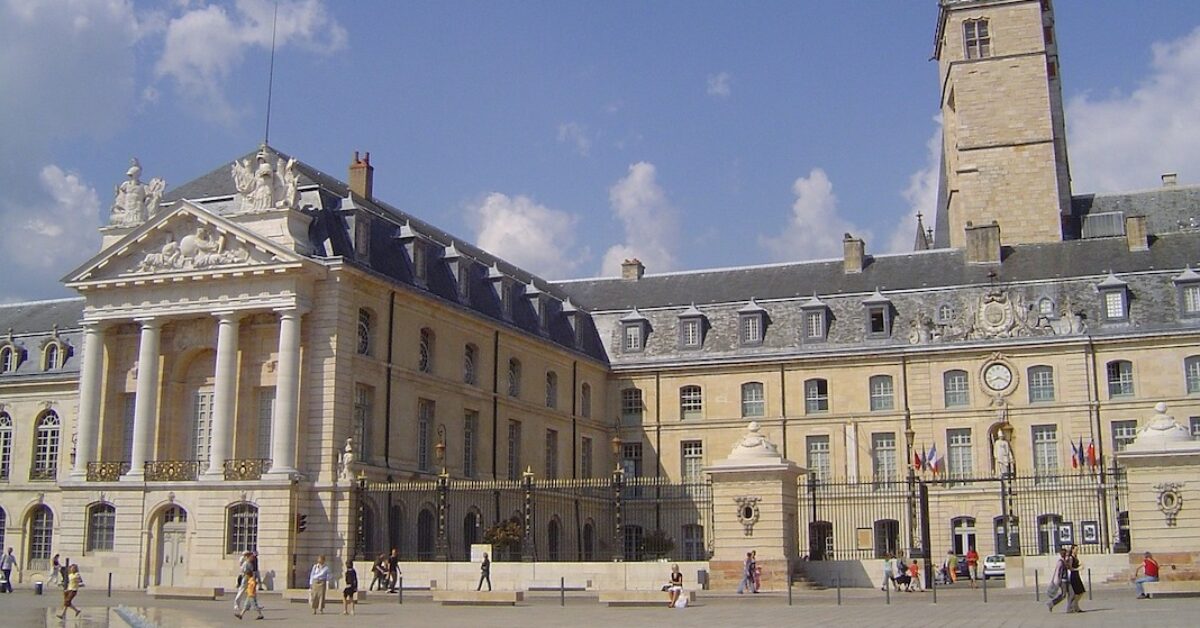Perhaps best known for the mustard, Dijon sits in the heart of the Burgundy region and is peppered with just as much excitement as its eponymous condiment. Brimming with history, museums, and excellent cuisine, this city is not to be missed on any tour de France.
HISTORY
Originally a Roman city called Divio, Dijon sat on the road between Paris and Lyon. Evidence of its castrum, or city perimeter, can be viewed in the city’s Musée Rude (8 rue Valiant) and dates back to the 3rd century. Ruled by the Dukes of Burgundy from the 11th to the late 15th centuries, Dijon wielded tremendous global power, influencing much of Renaissance Europe. However, the march of time diminished their dominance, and by the 1500s, Dijon was no longer a booming metropolis. However, spotting evidence from this significant time period isn’t difficult: the famous ducal palace now houses the Musée des Beaux Arts (1 rue Rameau), where one can view the tombs of the four major dukes, as well as the city’s town hall.
ATTRACTIONS
Endowed with a quirky history, any visit to Dijon begins with homage paid to the city’s mascot. Carved into the exterior of Notre Dame de Dijon (Place Notre Dame), a small “chouette,” rubbed smooth by countless hands, makes its home. Protocol states that visitors should touch the owl with their left hand (as it lies closest to the heart) and make a wish. Be sure to look up as well, for 57 gargoyles with eccentric expressions adorn Notre Dame’s frame.
The owl, memorialized by multiple triangular plaques molded to the cobblestoned streets, symbolizes a possible path to follow to hit all the important sites Dijon offers to tourists. Be sure to include the Tour Philippe le Bon, located just inside the Palais des Ducs. The 316-step climb delivers an impressive bird’s eye view of the medieval city.
As Dijon escaped heavy bombing during both World Wars, its Gothic architecture remains intact. A visit therefore requires a tour of the city’s churches, particularly St. Bénigne (Place Saint Bénigne) and the attached crypt, dating back at least 1000 years. St. Michel (Place Saint-Michel) also merits a look, as does the interior of Notre Dame. As to museums, the Musée Archéologique (5 rue Docteur Maret) offers visitors a chance to learn more about Dijon’s rich Gallo-Roman roots, while the Musée des Beaux Arts provides a more cultural dive into history. Museum fare is usually free and offers a welcome reprieve from big-city price tags.
FOOD
If Dijon is known for mustard, Burgundy is known for its rich culinary traditions. When mealtime rolls around, be sure to check out Epicerie et Cie (5 place Emile Zola), and order the French fries in duck fat. While one may be tempted to choose escargots or boeuf bourguignon, Epicerie offers other less obvious but equally authentic options, such as jambon persillé (a terrine of ham and parsley) and oeufs en meurette (eggs poached in a red wine sauce).
Speaking of wine, absolutely partake in the incredible bottles Burgundy has to offer. Recently celebrated by UNESCO as a world heritage site, the conditions and climate from which Burgundy benefits permits some of the best winemaking in the world. Likely any wine will win over your palate but be sure to sample both regional reds and whites. If tempted by a sweeter cocktail, opt for a Kir or Kir Royale, a mixture of white wine (the sparkle makes it royal) with crème de cassis, a black current liqueur made in Dijon.
A visit to Burgundy is incomplete without a largely unknown confection dubbed “une figue.” No, it is not the actual fruit, nor do fig flavors figure in its composition. Instead, it’s a puff pastry shell filled with unctuous pastry cream and enveloped in pale green almond paste. Pick some up for an afternoon delight chez Vannier Patisserie (12 rue de la Liberté)
WEEKEND HOT-SPOTS
To comfortably see Dijon’s surrounding cities, rent a car from the train station and trace the Route des Grands Crus. Stretching from Dijon to Santenay, the tour takes you through Marsannay, Nuits-Saint-Georges, Beaune, Meursault, Puligny-Montrachet…the list goes on. If confident on a bicycle, it is also possible to follow the “véloroute” from Beaune to Santenay, a 22km journey that will not disappoint the senses.
If wine is less your interest and ancient cities take precedent, consider motoring to Semur-en-Auxois, known for its excellent medieval architecture or Vézelay, a fortified city whose cathedral claims to host Mary Magdalene’s remains. Both locations tout excellent restaurants (and stands selling jewel-toned cassis sorbet) and are worth the hour-long drive for a weekend getaway.






